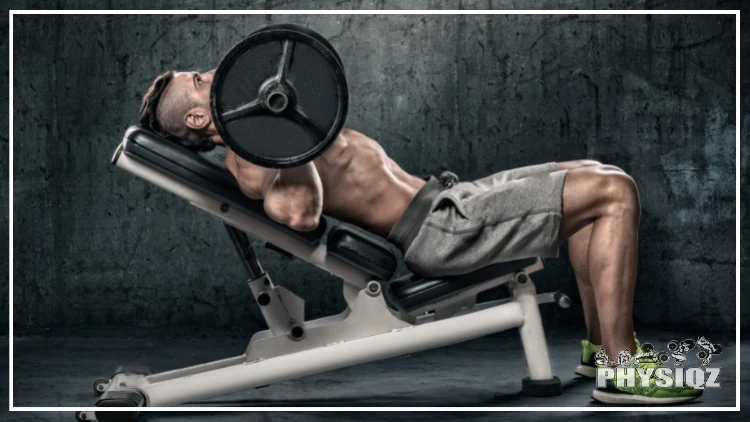
During the incline bench press, numerous muscles are engaged, similar to those involved in incline bench press muscles worked flat and decline bench presses. However, it particularly targets the upper pecs while also activating muscles in the back, shoulders, and, of course, the triceps.1
However, this is just an overview because there’s several muscles that make up the pecs, the triceps, shoulders and arms so we’ll cover each muscle in detail, where it’s located, show a picture of each muscles, and explain their function in the incline bench.
On top of this, we’ll also explain the best incline bench press angle, bar touching point, and elbow and shoulder positioning to ensure you don’t make the bench angle mistake that can ruin it.
Lastly but not least, we’ll also touch on the differences in muscles targeted between flat, incline, and decline bench press alongside benefits, alternatives, and a workout routine to get you the chest you dreamed of.
Muscles Engaged in Barbell Incline Bench Press
The incline bench press with a barbell engages the chest muscles (pectoralis major), shoulder muscles (front deltoids), and triceps muscles as its primary movers, similar to the flat bench press.
While the flat bench press is the bread and butter and staple for most lifters to build a huge chest, the inclined version of the barbell bench press, often seen as a hybrid of the overhead press and bench press, is frequently adopted by powerlifters to bolster overhead movements like log presses, and by bodybuilders aiming to develop a well-rounded and symmetrical chest.
The incline bench press is more difficult to perform than the flat bench due to the inclined position which is the reason many lifters shy away from it. Nevertheless, the incline bench press can effectively address muscle weaknesses present in the flat bench press and translate to improved performance in the flat bench press, which is crucial for assisting lifters in overcoming bad chest genetics.
In addition to targeting the primary movers, the incline bench press employs the use of secondary muscles that work in collaboration with the primary movers for a stable, fluid movement. These are the back muscles including the erector spinae, lats, rhomboids and traps.
Chest Muscles (Upper Pecs)
The angled barbell bench press is an upper pec focused exercise that targets the clavicular head of the pec muscles, as the lifter lies at a typical angle of about 30 degrees, positioning the body raised parallel to the hips.
This shifts the angle of resistance resulting in a maximal upper pec focus due to the muscle fibers being below the line of force and the upper pecs are most activated at the bottom range of the movement, when the bar is resting on the chest.
An angle of between 30 and 45 degrees is enough to activate the upper pecs more than they do the lower pecs in the incline bench press.2 As a result of this increased activation, barbell incline bench press has been shown to be an excellent contributor to upper pec hypertrophy (muscle growth) when compared to other variations of the bench press.3
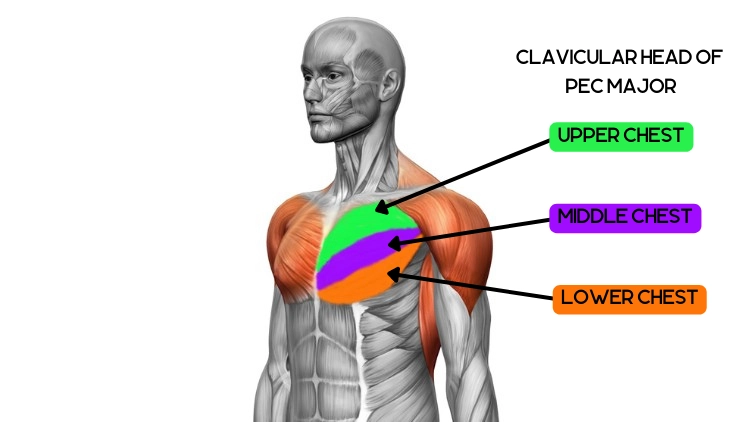
Source: Science Photo Library via Canva.com4
Shoulder Muscles (Front Deltoids, Rotator Cuff)
The incline bench press demands from the front deltoids much more than other variations, this is because the higher the lifter is placed in a vertical plane where they are pressing, the higher the engagement of the shoulders until they reach an overhead press which is a shoulder dominant movement. The front deltoids are most active in the mid phase of the movement.
As a result of the load taken on by the front deltoids, less stress is placed on the rotator cuffs than when done on a flat bench; this typically makes the lifters of the barbell incline bench press less prone to shoulder injuries and pain.
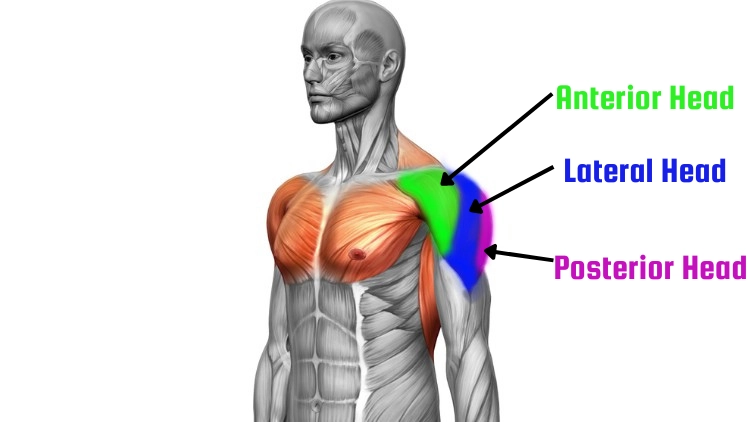
Source: Science Photo Library via Canva.com4
Arm Muscles (Triceps)
The triceps are the third primary movers for the inclined bench press having the role of extending the elbows from being bent to when they are in a locked position in the lock out at the top phase of the movement. Triceps have a diminished role in the incline bench press, almost 50% less than they do in both the decline and flat bench press.5
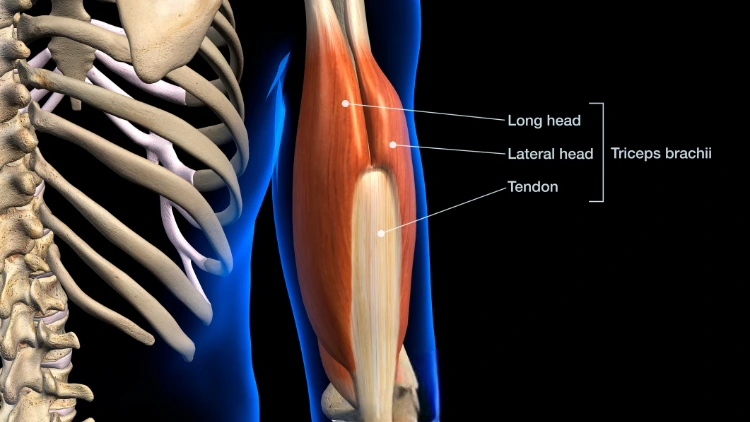
Source: Hank Grebe via Canva.com6
Back Muscles (Lats, Traps, Rhomboids)
The back muscles are the stabilizer muscles and function to serve as a stable foundation for the movement enabling the primary movers to execute the movement. When executing the incline bench press, the shoulders must be within a retracted position; this is facilitated by a combined action of these back muscles.
By the shoulders remaining retracted, they are protected from additional stress and allow the pecs to be the main movers thus preventing any injuries.
In addition to this role, the back muscles ensure that the bar is descended in a smooth and controlled manner mimicking a row. The row being a pull exercise that is targeted by these back muscles.
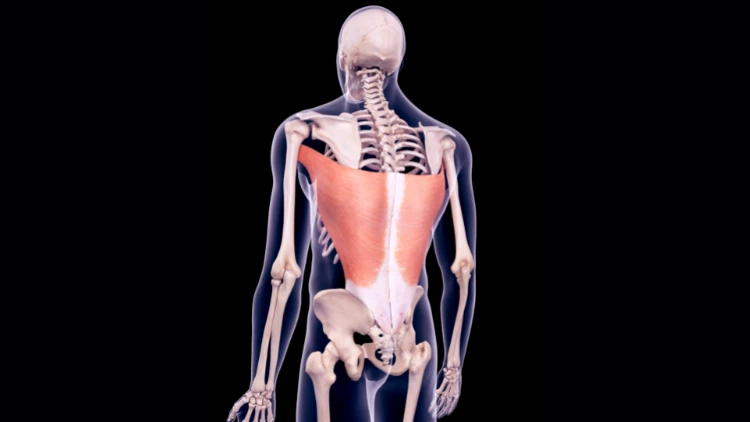
Source: Science Photo Library via Canva.com7
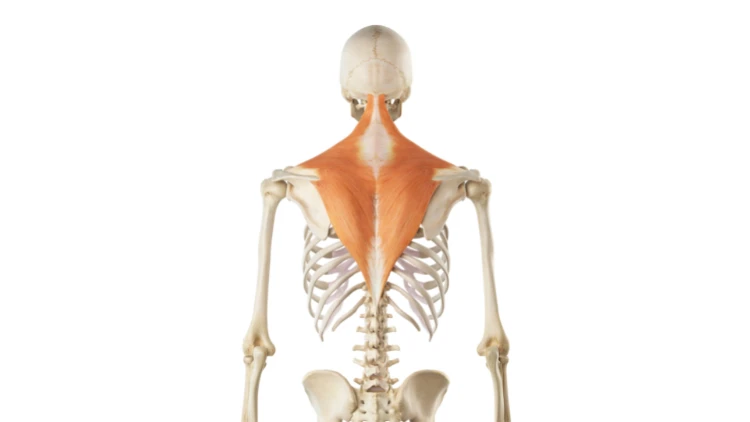
Source: Science Photo Library via Canva.com8
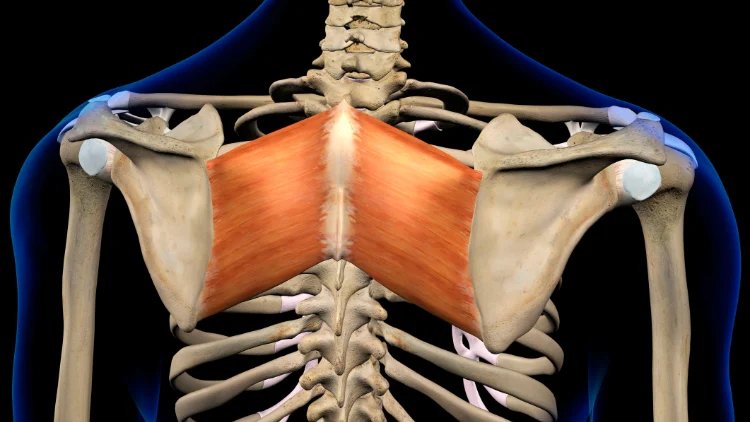
Source: Hank Grebe via Canva.com9
How Steep Should the Incline Bench Be & How Does It Affect the Muscles Used?
It is important to pick the correct angle and to make sure the bench press is not too steep as this will cause a varying muscular activation configuration between the two primary movers of the incline bench press, the upper pecs and the front deltoids with bias leaning to the front deltoids.
The incline of the bench press will cause an increased activation of the front deltoids compared to the flat bench press and the incline bench press is actually a combo of the flat and overhead press.
The rule of thumb is that as per studies conducted, demonstrates that 30 degrees is sufficient for upper pec activation with 45 degrees being the maximum.10 Once this threshold is crossed, the upper pecs are less engaged and the workload transfers to the front deltoids.
A study that was conducted in 2010 demonstrated that the best incline angle for each muscle as:11
- Lower pec—0 degrees
- Upper pec—44 degrees
- Front deltoid—28 degrees
Since it may be challenging to accurately measure the angle, the lifter could start by adjusting the bench and see what works for them due to differing anatomies. An effective way to gauge if the angle was sufficient is if the upper pec muscles were sore the next day, which means they were effectively targeted.
It is also acceptable to play around with different angles and incorporate all reasonable angles into a routine.
Therefore, the muscles engaged in the incline bench press are directly influenced by the incline angle, with certain muscles being more activated than others. Consequently, placing the bench at an angle greater than 45 degrees is a common mistake that undermines its effectiveness.
Incline Bench Press vs Flat Bench Press vs Decline Bench: What Are the Differences in Muscles Worked?
The placement of the torso, whether it is flat, incline or decline will result in different muscular activation configurations of the three different primary movers; the chest muscles, shoulder muscles and triceps.
Decline Bench Muscles Emphasized (Lower Pecs, Upper Pecs, Triceps)
Decline bench presses are done at a decline of roughly 15-30 degrees which places the torso in a declining slope and causes the lower pecs to be highly activated. While the activation of the lower pecs is significant, the activation of the upper pecs is similar to that of the incline bench press, implying that the upper pecs are still a major mover of this movement.10
The triceps are activated equally as they are on the flat bench press which means that they have a significant role serving to extend the arm to press the weight up.11 While the shoulders are among the primary movers, they have a diminished role compared to the front and incline barbell press.
Flat Bench Emphasized (Upper Pecs, Lower pecs)
The flat bench works both upper and lower pecs evenly due to a more efficient pressing angle as the line of force is at the center of the chest muscles, as a result much more heavier weight can be lifted on this variation as compared to the incline—this is why it’s a fundamental exercise for bodybuilders and a standard inclusion in powerlifting competitions as a measure of upper body strength. It’s consistently incorporated into a workout plan for skinny guys to build muscle fast.5
Muscles Targeted in Incline Bench Press (Upper Chest, Front Delts)
The incline bench press muscles worked include mostly the upper pecs and highly activate the front deltoids due to the angle of the incline, which is more vertically inclined towards the overhead press. Triceps muscles have less activation when compared to the flat and decline bench press.
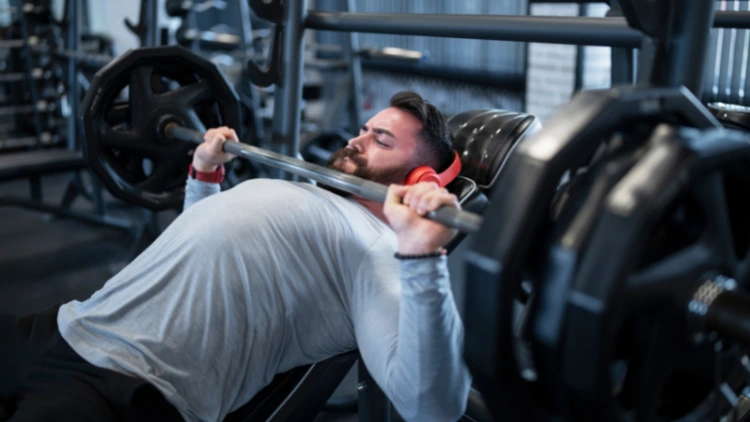
Source: ArtistGNDphotography via Canva.com12
Does Dumbbell Incline Bench Press Work the Same Muscles As Barbell Incline Bench?
To the layman, the dumbbell incline bench press and the barbell incline bench press seem like they are similar since the angle of the torso in inclined and both involve pressing weight—they do incidentally use the same primary muscles with the chest, front deltoids and triceps being the prime movers of the movement.
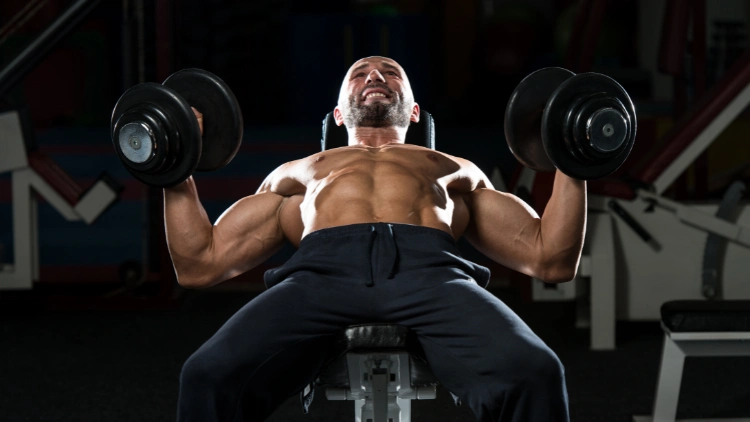
Source: Ibrakovic via Canva.com13
When performing the incline bench press with dumbbells, similar to using barbells, there’s a tendency to engage the front deltoids and upper pecs more than in either the decline or flat bench press variations.
Dumbbell bench press however allows for a greater range of motion (ROM) than its counterpart due to the absence of a barbell that would restrict the arms from descending lower. Consequently, the barbell works the primary movers more, particularly the pecs, because of the ability to load more weight and due to the range of motion being shorter.
Common Mistakes Seen in the Incline Bench Press with a Barbell
Lifters frequently make several mistakes while performing the incline bench press with a barbell, which can compromise their form, leading to inefficient lifts or, worse, potential injury. These errors encompass misjudging the bench angle, arching the back, bouncing the bar, and neglecting to utilize bench press leg drive.
Incorrect Bench Angle
It is important to get the bench angle correct, otherwise the lifter risks placing too much work on the front deltoids and not allowing the upper pecs to work as they should. Ideally, the correct angle should be 44 degrees which is optimal for placing strain on the upper pecs while minimizing front deltoid exposure.
Too vertical a posture, and the front deltoids are recruited more than the upper pecs which defeats the purpose of the incline bench press.
Failure To Squeeze Shoulder Blades
Hunching and rounding the shoulders has become customary in people’s daily lives since they spend so much time sitting down and doing this—this often carries to lifting weights. When this happens in the incline, the shoulder is placed at an advantage causing it to be more explosive and take more of the weight off the pecs.
The shoulders should be relaxed and placed in a backwards position to allow the pecs to handle more of the load of the press. Doing this also puts less undue stress on the shoulders and protects them from injury.
Arching The Back
It’s common to see lifters arching their backs during flat bench presses, particularly in powerlifting competitions. However, when a lifter arches their back in the incline, there will be a shift in resistance and an altering of the angle of the entire movement which makes it mimic a flat bench press defeating the purpose of the incline.
In addition, the back is compromised and is at risk for injury in this position. The back should remain flat on the bench in line with the incline.
Incorrect Touch Point
The touch point is important to ensure that unnecessary stress is not placed on the shoulders and that the upper pecs are properly stimulated. Ideally, the bench press should follow a vertical bar path, with the bar lightly touching the upper part of the chest just below the clavicles (shoulder blades) during the incline bench press. It’s important to maintain consistency with this touch point throughout the movement.
Not Using Leg Drive
Leg drive, which involves driving through the heels, provides a stable base to power through the lift and is an element often not taken advantage of by many lifters. It can help the lifter press the weight with maximum force by driving through heels with the resulting extra power transferred into the body and onto the bar.
Failure To Pause At The Bottom
Many lifters fail to pause at the bottom and leave potential benefits like adding extra tension and strain on the muscles—this is known as time under tension, and increasing it is beneficial to hypertrophy (muscle growth).14 A pause for 1-2 seconds is sufficient to increase this time under tension.
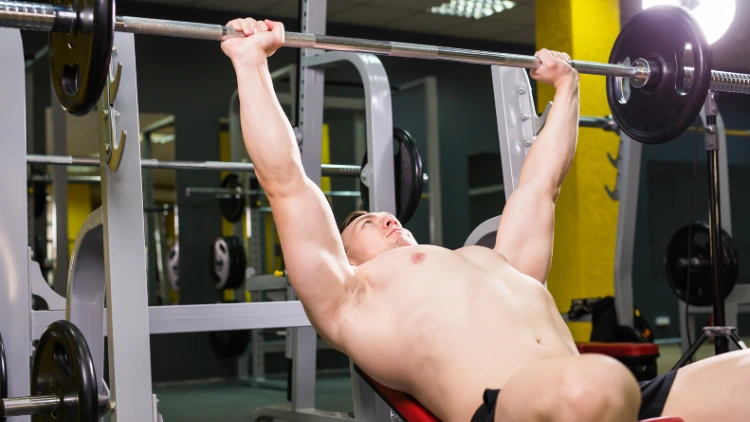
Source: Изображения пользователя Tatiana via Canva.com15
In addition to this, the lifter is able to be poised and composed for the subsequent concentric (the pressing or lifting) step of the movement.
Benefits of the Incline Bench Press
Other than building an upper chest and providing a complete, balanced workout of the chest, especially when combined with the flat bench press, the incline bench press muscles worked provide other benefits such as toning the arms, engaging and growing the lats, and increasing mental resilience.
Excellent Upper Chest Exercise
The incline bench press is a master at building the upper chest allowing a more sculpted and defined physique, especially when complimented with the flat bench press. The incline bench press contributes to developing a well-rounded and balanced chest. Since chest muscles are notoriously among the hardest muscles to grow, incorporating the incline bench press into your routine can effectively stimulate those challenging pecs.
Strengthens Upper the Upper Body
Not only does this exercise build muscle in the upper body, it also strengthens a number of muscle groups in the upper body such as the shoulders, lats and triceps. It is great at bulking the entire body which carries on to other movements.
Grows & Strengthens the Front Delts, Lats, Rhomboids & Traps
The front deltoids which are one of the primary movers in the incline are sufficiently activated, which grows and strengthens them. In addition, the lats, rhomboids and traps which are among the secondary muscles, are a key muscle group to provide support for the bench press and they assist the shoulders and chest muscle to be able to complete the movement which in turn strengthens and grows them.
Tones the Arms
Triceps make up over 60% of the mass in arms, and hence their size contributes significantly to overall arm look and physique. These muscles are highly activated in the incline and often lifters will feel the ‘pump’ in both their pecs and triceps.
Consequently, the incline bench press proves to be an excellent exercise for individuals pondering the lack of growth in their arms and for those dealing with challenges like bad triceps genetics in tricep development.
Mental Resilience
Incline bench presses enhance mental resilience and toughness as it is a challenging exercise to perform and stay consistent with. This is a skill that can be acquired, learned and improved upon by completing the exercise.
As a result, this can carry over from the gym to everyday activities and even careers where individuals can be apt to overcoming challenges they are presented with, and consequently mature at dealing with obstacles.
Alternatives & Variations to the Incline Bench Press
While the incline bench press is a superior exercise to beef up the upper body and chest muscles, there are other variations that can be included to supplement and complement this workout to make for a holistic training program—these include incline dumbbell flyes, overhead barbell shoulder press and low to high cable flyes.
Incline Dumbbell Press
These are similar to the barbell bench press but are performed using dumbbells which allow for a longer range of motion and for a deeper weighted stretch (weight loading that increases muscle stretch and tension). They allow a more natural shoulder and wrist movement due to the absence of a fixed bar, and since they are unilateral, they can help address muscle imbalances.
Incline Dumbbell Pec Flyes
Incline dumbbell pec flyes are performed using dumbbells and on an incline bench. They target the upper pecs with the shoulders playing the role of secondary muscles and the triceps stabilizing the movement.
They are an isolation movement that can activate the upper pecs in a way in which the angled barbell chest press can’t.2
Low To High Cable Flyes
These are great alternatives to the incline bench press, and can often be done after completing the compound movement. The upper chest is heavily engaged in this movement and the upper pecs are moved through an increased range of motion; the cables ensure there is constant tension.
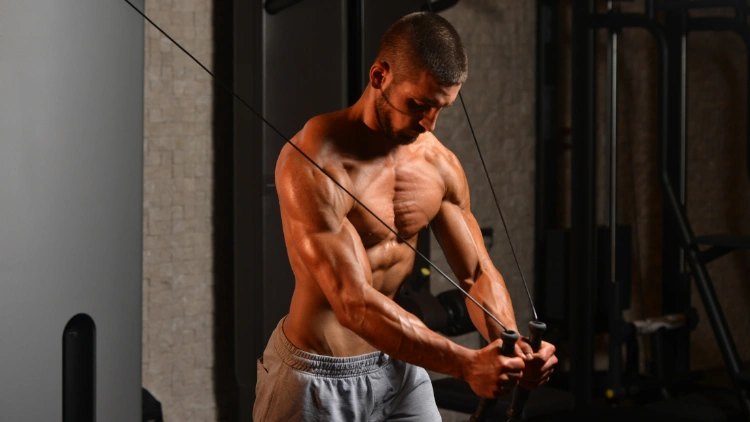
Source: Ibrakovic via Canva.com16
Resistance Band Incline Chest Press
These are incline chest presses that employ the use of a resistance band and no other equipment. A long loop resistance band is attached to a low door effectively mimicking the upward diagonal movement of the incline bench press during the press.
The resistance band ensures the chest muscles are always under tension which is a plus for hypertrophy.
Decline Push Ups
Decline push-ups are ideal body weight exercises that target the upper chest as upper chest barbell presses. They are performed by elevating the feet on a platform which engages the upper pecs and front deltoids and can be done anywhere and at any time.
Dumbbell Chest Pullovers
This exercise uses the dumbbells and is performed through a wide arc which results in an effective stretch and contraction of the pecs. They don’t however isolate the upper pecs solely, but target the entire pec muscle, front delts, triceps, serratus anterior, lats and to a lesser extent, the biceps.
Overhead Barbell Shoulder Press
Also known as the shoulder press, this movement targets all three heads of the shoulders; front delts, side delts and rear delts and also works the upper chest muscles, triceps, lower back and abdominals. Since the lower body is critical to providing a stable pillar, the quads, glutes and hamstrings are also enlisted to make for an almost complete full body workout.
Underhand Chest Front Raises
Front raises when done using dumbbells typically target the delts—this changes when the grip is supinated (palms facing outward) which shifts the focus to the upper pecs. In addition to the chest, this movement targets the shoulders, triceps and biceps.
It is a superior movement in regards to loading the upper pecs eccentrically (lengthening under the load during the lowering) since the elbows are lowered in front of the torso.
How To Do the Incline Bench Press Correctly
Executing the incline bench press with proper form ensures effective targeting of the upper pecs, promoting muscle growth and minimizing the risk of shoulder injury. This approach also fosters safer movement during the exercise.
Here are the 6 steps a lifter should take:
1. Setting Up the Bench
This step is dependent on whether the gym has an adjustable incline bench. The angle of the bench should be set to between 30 and 45 degrees and not anything more than this, as the shoulders will take away work from the pecs.
Seat height should be adjusted such that the eyes are directly under the bar when lying down. If there is no incline bench, an adjustable bench can be positioned in a squat rack; the bar should be directly above the face and 2-3 inches lower if the bar is held with elbows locked.
2. Planting the Feet
The feet should be firmly planted on the floor about shoulder width apart. Since lifters have differing anatomies, they should play around with different positions to find what works for them and what feels most stable.
3. Unracking the Bar
Keep the butt planted on the bench and the shoulders need to be retracted and/or pinched together and pulled towards the waist with chest raised towards the bar. Grip the bar with hands slightly wider than shoulder width (approximately 22-28 inches); the bar should be held low in the hands, more towards the wrist than knuckles with a firm squeeze.
The forearms will need to be vertical and wristed stacked above the elbow joints to ensure optimal force is applied.
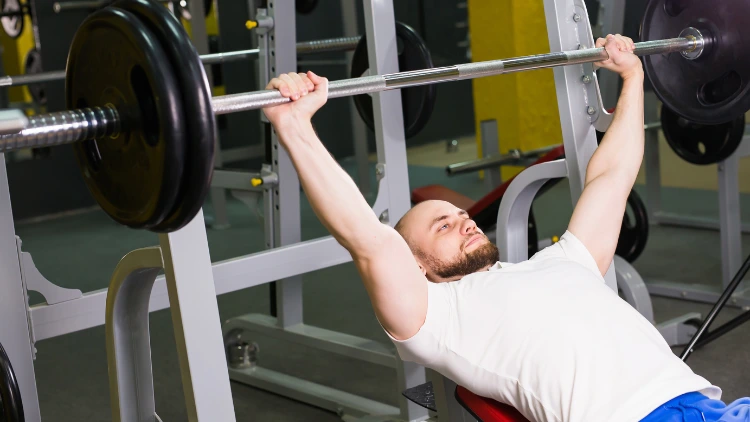
Source: Изображения пользователя Tatiana via Canva.com17
4. Descending the Bar
Ideally, the elbows need to be tucked in such a way that the arms are roughly 90 degrees relative to the body. While the exact angle that can be achieved will be unique to individuals, the lifter must make sure to maintain a balance of neither over flaring their arms nor tucking them too close to the torso.
Ensure there is constant tension through the descent in the shoulders which are back down and retracted, and lower the bar to the upper part of the chest slightly below the collar bones.
When performing the bench press on an incline, it’s important to understand the optimal bar contact point. The bar should make contact with the chest just below the shoulder blades, and it should not be bounced off during the upward movement.
5. Ascending the Bar
Maintain tension in the shoulder blades and press the bar off the chest and lock out the elbows at the top phase of the movement. At this point, begin the descent once again and perform the desired reps.
6. Racking the Bar
Don’t attempt to do the final rep by pressing into the hooks because any miss will cause the bar to tumble down and cause injury. Rather, the final rep should be completed with the bar above the shoulders and elbows locked, the lifter can then proceed to crash the bar back into the rack.
Lifters should follow these simple tips and cues to ensure a safe and efficient lift:
- Use moderate weight and ensure form is on point.
- Focus on bending the bar.
- Maintain touchpoint consistency
- Do not bounce the bar on the chest.
- Glutes and shoulders must always be in contact with the bench.
- Experiment and find what grip width works best.
- To maintain constant tension, stop just before lockout.
- Do not allow wrists to be extended.
- Rest 3 to 4 minutes between each set.
- Avoid going to failure on every set.
The Ultimate Bench Press Workout Routine
There are a number of bench press workout routines, depending on what the lifters want out of the program and length they are willing to engage the program to suit schedules and specific needs. Several routines follow a bench press pyramid structure, spanning from 4 weeks to 12 weeks. The program outlined below for 4 weeks enables lifters to efficiently manage their benching time while steadily increasing the load by 5 kg each week, resulting in a potential 20 kg enhancement to their bench press within the specified timeframe.
These accessory exercises should be used to enhance the lifter’s bench performance and the first of the two sessions could be done on a Monday and the second set done on Friday or Thursday to allow the muscles to recover. To verify the program is working, test out the three rep max at the start of each workout week by adding 5 kg.
| Monday | Friday or Thursday |
| Bench press (5×3) | Incline bench press (5×5) 70% of bench weight |
| Floor dumbbell press (3×8) | Barbell military press (3×6) |
| Cable pull-down (3X12) | Barbell bent-over row (3×8) |
| Reverse band press (5×3) | Rhomboid shrug (3×10) |
The accessory exercises outlined above will improve different components of the press and are briefly outlined below:
- Floor dumbbell press—help train the lifter to tighten their bodies while pressing the bar.
- Cable pull-down—will help develop strong triceps and allow tendons to recover from heavy benching.
- Reverse band press—the bands help maintain constant tension, key to preparing lifters for heavier weights.
- Close grip bench press—this will allow the lifter to strengthen their triceps which will improve the top phase of the lift performance.
- Barbell military press—barbell military press will help improve on the shoulder’s mobility and range of motion in the bench.
- Barbell bent-over row—barbell bent rows will help build a stronger back critical to a good bench press since they support the shoulders which can carry heavier load.
- Rhomboid shrug—this helps build traps that are key to keeping shoulder blades retracted and train lifters to keep chest out when benching which will allow for heavier lifts.
Following this routine diligently could propel the lifter into the prestigious realm of those frequently questioned about in the gym: individuals capable of bench pressing 225. Furthermore, it might even position them to potentially rank among the top 10 bodybuilders of all time.
All in all, the incline bench press is a superior compound movement and excellent choice for lifters looking to build upper body strength and mass.
Moreover, the muscles engaged in the incline bench press mirror those involved in the flat bench press. Nevertheless, the incline bench press muscles worked include heightened activation of the upper chest. Making the error of misjudging the bench angle transforms the exercise into one primarily targeting the shoulders, thus missing out on potential gains in the upper pecs.
Frequently Asked Questions
Incline vs Flat Bench Press: Which Is More Challenging?
The incline bench press is more challenging due to an inclined position targeting mostly the upper pecs; the flat bench press is an efficient angle of press and activates both upper and lower pecs equally which leads to sharing load and allows for a heavier lift.
What Muscles Are Worked By a Flat Bench Press?
The flat bench press enlists the upper and lower pecs, front deltoids and triceps as the primary movers. In addition, it recruits secondary muscles at the back including the lats, traps, rhomboids and erector spinae.
References
1EXTREME-PHOTOGRAPHER. “Incline bench press – ending position.” Canva. Accessed 15 April 2023. <https://www.canva.com/photos/MAEJLZWHQ5I-incline-bench-press-ending-position/>>
2Jakob D Lauver, T. E. (2015, March 23). Influence of bench angle on upper extremity muscular activation during bench press exercise. Retrieved 2022, from <https://pubmed.ncbi.nlm.nih.gov/25799093/>
3Suene F N Chaves, V. A.-J.-C.-J. (2020, August). Effects of Horizontal and Incline Bench Press on Neuromuscular Adaptations in Untrained Young Men. Retrieved 2022, from <https://pubmed.ncbi.nlm.nih.gov/32922646/>
4Science Photo Library. “The muscles involved in standing biceps curl. The stabilizing muscles are highlighted.” Canva. Accessed 12 April 2023. <https://www.canva.com/photos/MADmTGwAFbo-the-muscles-involved-in-standing-biceps-curl-the-stabilizing-muscles-are-highlighted-/>
5Atle Hole Saeterbakken, D.-A. M. (2017, June). The Effects of Bench Press Variations in Competitive Athletes on Muscle Activity and Performance. Retrieved 2022, from <https://pubmed.ncbi.nlm.nih.gov/28713459/>
6Hank Grebe. “Labeled Anatomy Chart of Shoulder, Elbow and Triceps Muscles in Skeleton on Black Background.” Canva. Accessed 14 April 2023. <https://www.canva.com/photos/MAEJnzTxmJU-labeled-anatomy-chart-of-shoulder-elbow-and-triceps-muscles-in-skeleton-on-black-background/>
7Science Photo Library. “F017/1255.” Canva, 20 April 2019. Accessed 13 April 2023. <https://www.canva.com/photos/MADq3vbyn-k-f017-1255/>
8Science Photo Library. “”Human trapezius muscles.” Canva. Accessed 13 April 2023. <https://www.canva.com/photos/MADmTLHptgU--human-trapezius-muscles/>
9Hank Grebe. “Male Rhomboid Major Back Muscles in Isolation on Skeleton.” Canva. Accessed 15 April 2023. <https://www.canva.com/photos/MAD9YMm5tt4-male-rhomboid-major-back-muscles-in-isolation-on-skeleton/>
10David Rodríguez-Ridao, J. A.-V.-F. (2020, October). Effect of Five Bench Inclinations on the Electromyographic Activity of the Pectoralis Major, Anterior Deltoid, and Triceps Brachii during the Bench Press Exercise. Retrieved 2022, from <https://www.ncbi.nlm.nih.gov/pmc/articles/PMC7579505/>
11Arthur A Trebs, J. P. (2010, July). An electromyography analysis of 3 muscles surrounding the shoulder joint during the performance of a chest press exercise at several angles. Retrieved 2022, from <https://pubmed.ncbi.nlm.nih.gov/20512064/>
12ArtistGNDphotography. “Bench Press In Gym.” Canva. Accessed 15 April 2023. <https://www.canva.com/photos/MAEJAZUM-jY-bench-press-in-gym/>
13Ibrakovic. “Mature Man Doing Dumbbell Incline Bench Press Workout.” Canva. Accessed 15 April 2023. <https://www.canva.com/photos/MADBTyEHNao-mature-man-doing-dumbbell-incline-bench-press-workout/>
14Michal Krzysztofik, M. W. (2019, December 4). Maximizing Muscle Hypertrophy: A Systematic Review of Advanced Resistance Training Techniques and Methods. Retrieved 2022, from <https://www.ncbi.nlm.nih.gov/pmc/articles/PMC6950543/>
15Изображения пользователя Tatiana. “Weightlifter at the Bench Press Lifting a Barbell on an Incline Bench.” Canva. Accessed 15 April 2023. <https://www.canva.com/photos/MAEsXp2yuGA-weightlifter-at-the-bench-press-lifting-a-barbell-on-an-incline-bench-/>
16Ibrakovic. “Chest Workout Cable Crossover.” Canva. Accessed 15 April 2023. <https://www.canva.com/photos/MADFweYtoYY-chest-workout-cable-crossover/>
17Изображения пользователя Tatiana. “Weightlifter at the Bench Press Lifting a Barbell on an Incline Bench.” Canva. Accessed 15 April 2023. <https://www.canva.com/photos/MAEsXeZmgbE-weightlifter-at-the-bench-press-lifting-a-barbell-on-an-incline-bench-/>